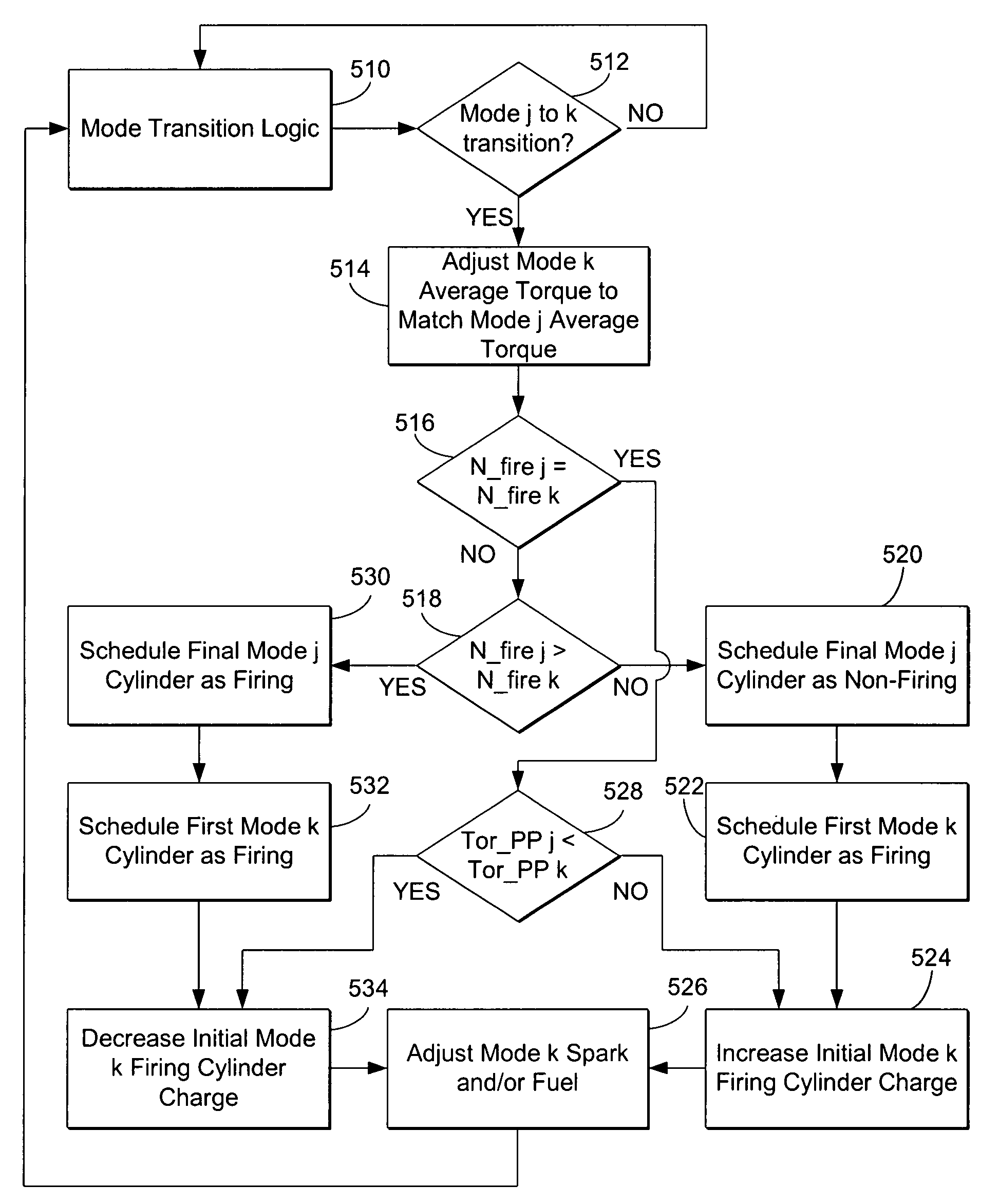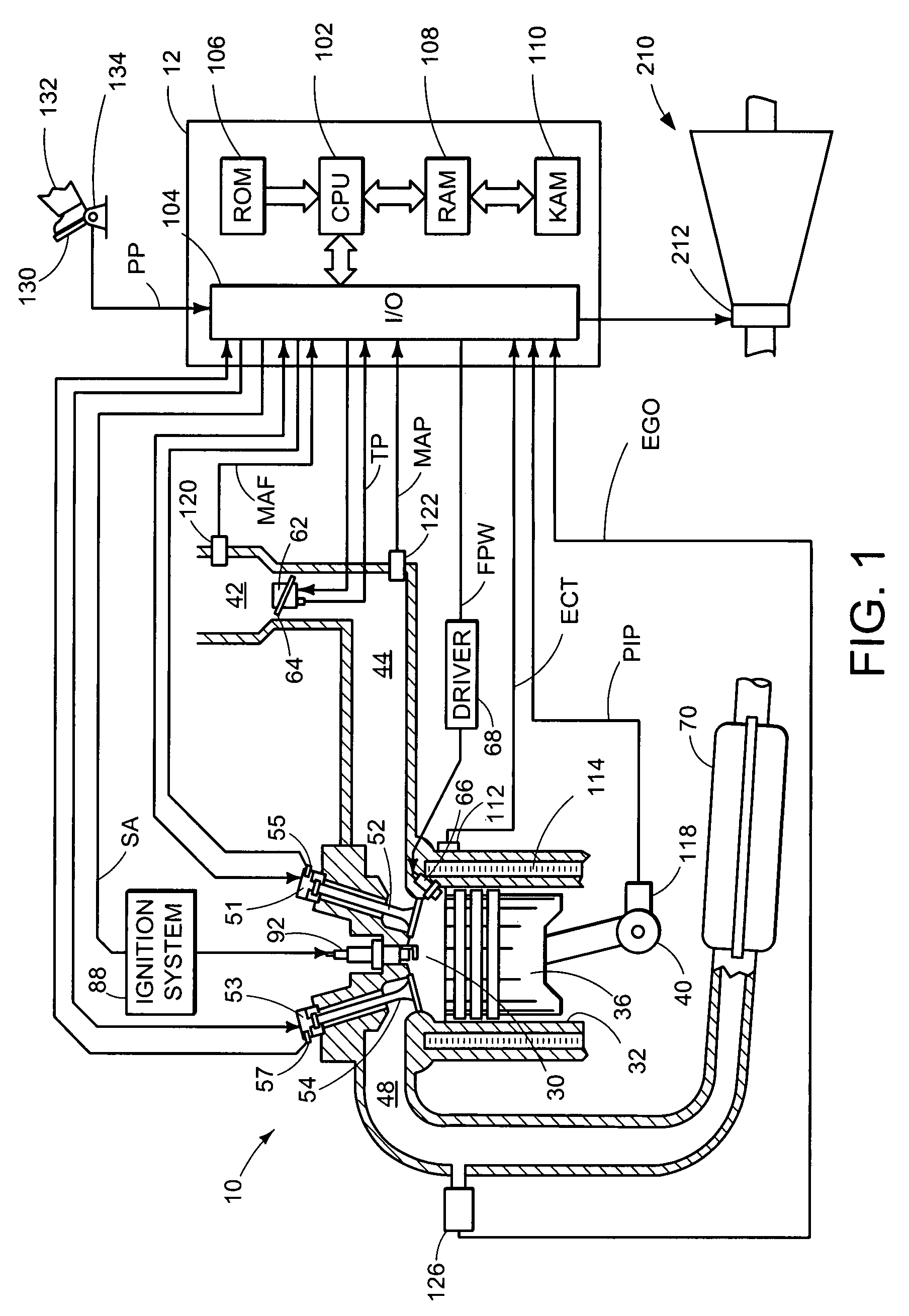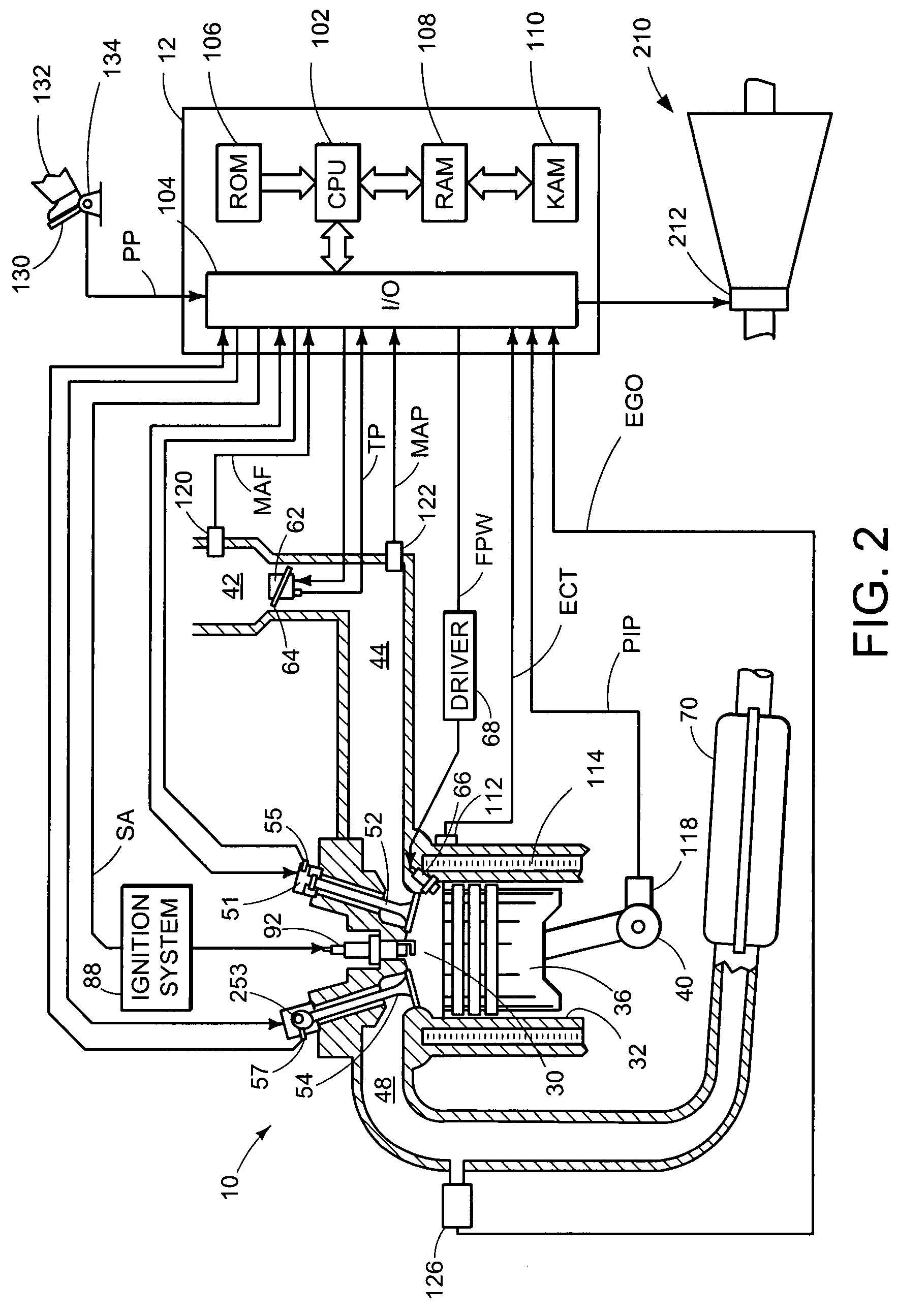Engine mode transition utilizing dynamic torque control
a technology of dynamic torque and engine mode, which is applied in the direction of electric control, speed sensing governors, instruments, etc., can solve the problems of increasing increasing the likelihood of mechanical malfunction, and increasing the longitudinal acceleration of the vehicle and/or excitation of the vehicle driveline. , to achieve the effect of improving engine efficiency, reducing the number of firing cylinders, and saving fuel
- Summary
- Abstract
- Description
- Claims
- Application Information
AI Technical Summary
Benefits of technology
Problems solved by technology
Method used
Image
Examples
Embodiment Construction
[0014]Referring to FIGS. 1 and 2, an example cylinder of multi-cylinder engine 10 is schematically shown. Engine 10 may be included, for example, with a vehicle propulsion system. Engine 10 may be controlled by a control system including controller 12 and by input from a vehicle operator 132 via an input device 130. In this example, input device 130 includes an accelerator pedal and a pedal position sensor 134 for generating a proportional pedal position signal PP. Combustion chamber (i.e. cylinder) 30 of engine 10 may include combustion chamber walls 32 with piston 36 positioned therein. Piston 36 may be coupled to crankshaft 40 so that reciprocating motion of the piston is translated into rotational motion of the crankshaft. Crankshaft 40 may be coupled to at least one drive wheel of the passenger vehicle via a transmission system 210. Further, a starter motor may be coupled to crankshaft 40 via a flywheel to enable a starting operation of engine 10.
[0015]Combustion chamber 30 may...
PUM
 Login to View More
Login to View More Abstract
Description
Claims
Application Information
 Login to View More
Login to View More - R&D
- Intellectual Property
- Life Sciences
- Materials
- Tech Scout
- Unparalleled Data Quality
- Higher Quality Content
- 60% Fewer Hallucinations
Browse by: Latest US Patents, China's latest patents, Technical Efficacy Thesaurus, Application Domain, Technology Topic, Popular Technical Reports.
© 2025 PatSnap. All rights reserved.Legal|Privacy policy|Modern Slavery Act Transparency Statement|Sitemap|About US| Contact US: help@patsnap.com



